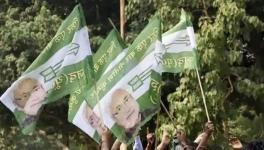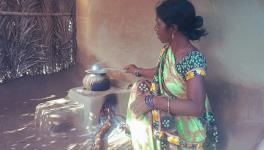Most AES Victims in Bihar Are Dalits, EBCs and Muslims
Image for representational use only.Image Courtesy : The Wire
Muzaffarpur: Chedi Manjhi, Ravinder Manjhi, Raj Kishor Ram, Haran Paswan, Anup Manjhi, all are Dalits. They have one more thing in common—all of them are fathers of children who have died due to AES in Bihar’s Muzaffarpur in the last fortnight.
Chedi Manjhi’s eight-year-old son Aditya Kumar reportedly died due to AES in the state-run Sri Krishna Medical College and Hospital (SKMCH) in Muzaffarpur. “My son died after suffering from Chamki bukhar [local name for AES] in the first week of June. We are poor, fighting to earn our daily bread, but God is killing our children. I am not alone; there are many like me in different Dalit hamlets,” said Chedi Manjhi, a resident of Dih Jiwar.
“Chamki bukhar is a curse for poor people like us, who are working hard to earn our livelihood. Our children are dying year after year, but there is no serious move to control it,” said Paswan, a resident of Ahiyapur in Muzaffarpur.
Paswan’s 10-year-old son Vikram Kumar died after he was admitted for treatment in SKMCH.
Several Dalits including Jogendar Ram of Sariya in Muzaffarpur, Shankar Ram of Sheogar district, Raj Kumar Manjhi of Bochahan in Muzaffarpur, and Ranjeet Ram of Maniyari in Muzaffarpur have lost their children due to AES in the last two weeks.
More than over two decades after AES first struck Muzaffarpur as an epidemic, the disease not only persists but also continues to spread among the poorer sections. Estimates say that more than 75% of the victims belong to the socially marginalised section – comprising mostly Dalits along with Extremely Backward Classes (EBC) and Muslims. There is hardly any case in which the AES-affected child belongs to a rich and well-off family.
This disease is estimated to have killed more than 400 children in last seven to eight years, while the number stands at 113 this month.
“If we look at the list of the names of victims of AES prepared by SKMCH, their surnames are like Manjhi, Ram and Paswan. Besides, there are victims whose fathers carry surnames like Sahni, Mahto and Yadav; all are either from backward castes or are poor Muslims,” a senior official of Muzaffarpur health department said. (The list of the names of the victims is also in possession of NewsClick.)
According to health officials in Muzaffarpur, AES cases are mostly coming from Mushahar, Ravidas and Paswan communities due to “their poor living conditions”.
Ranjeev, an environmentalist, said that Dalit children are malnourished and are more prone to consumption of contaminated water, which makes them an easy target of AES.
Doctors and experts, who have investigated to find the cause of deaths of children from AES, point to malnutrition as one of the main factors behind children’s vulnerability to the disease. This was iterated by the latest National Family Health Survey (NHFS 2015-16) that pointed out high rates of malnutrition among children under five years of age in Bihar.
Health officials, who have been closely monitoring AES for several years, said malnutrition among Dalit children is common due to prevalence of poverty.
After Chief Minister Nitish Kumar visited Muzaffarpur on Tuesday, the government has commissioned a survey in blocks or villages where death toll reported is high. The survey will study socio-economic profiles of people, particularly affected families and the environment they live in.
“For the first time, such a survey will be conducted. This would help in understanding ground reality,” another health official told NewsClick.
Principal secretary, Health Department, Sanjay Kumar said that of the 113 deaths, 91have died in the state-run Sri Krishna Medical College and Hospital (SKMCH), 16 in private Kejriwal Hospital in Muzaffarpur, two in Nakanda Medical College and Hospital in Patna, and four in other districts.
Doctors and health officials have different views on the reason behind AES and cause of the deaths. It has further complicated the process to combat or control the seasonal outbreak of AES. The central and state governments have failed in saving the children in the affected areas of North Bihar, where it has become an annual epidemic year after year.
Chief Secretary Deepak Kumar publicly admitted that even the government is unclear about what exactly was causing the AES outbreak, which has been recorded in Muzaffarpur since 1995.”We are still not aware if the disease is caused due to some virus, bacteria, toxin effect or due to consumption of litchi, malnourishment or due to environmental conditions such as high temperature and humidity. Several researches have been done, including by a team of experts from the Centre for Disease Control, Atlanta, but the finding is inconclusive,” said Kumar.
Get the latest reports & analysis with people's perspective on Protests, movements & deep analytical videos, discussions of the current affairs in your Telegram app. Subscribe to NewsClick's Telegram channel & get Real-Time updates on stories, as they get published on our website.
























